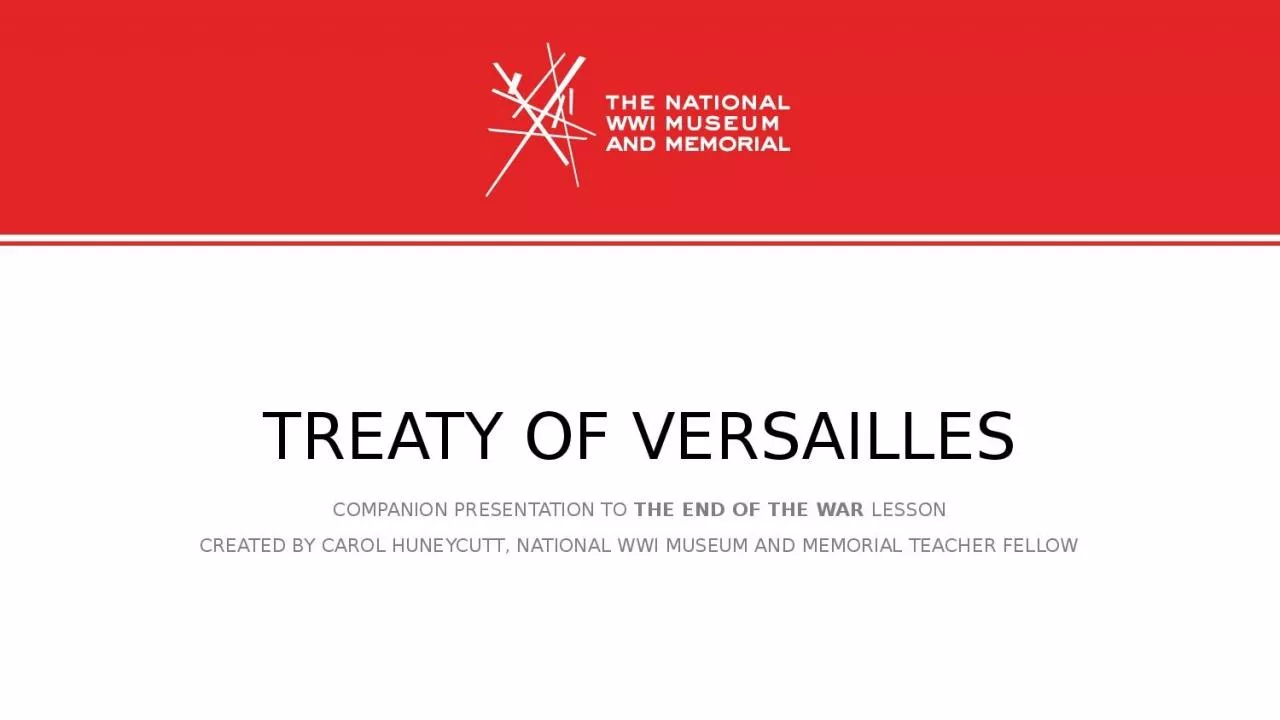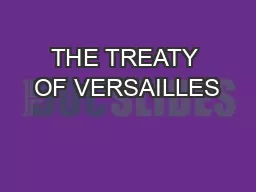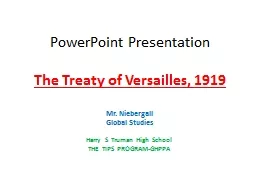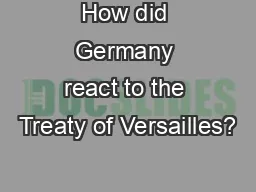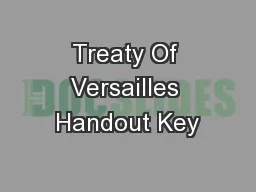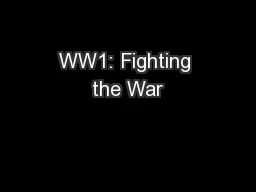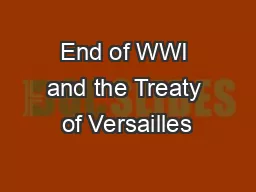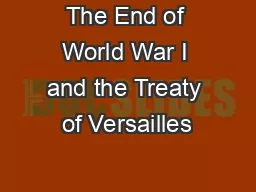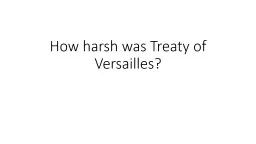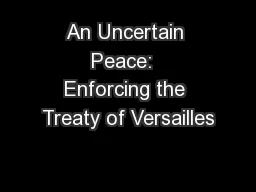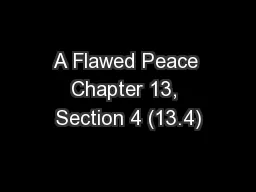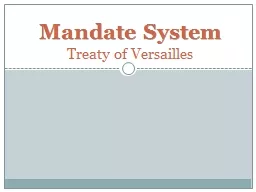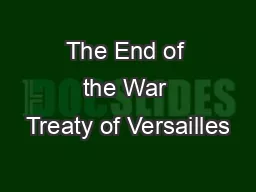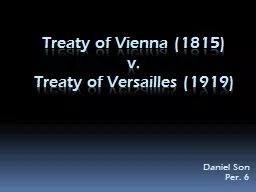PPT-TREATY of versailles COMPANION PRESENTATION TO
Author : joanne | Published Date : 2023-11-07
THE END OF THE WAR LESSON CREATED BY CAROL HUNEYCUTT NATIONAL WWI MUSEUM AND MEMORIAL TEACHER FELLOW LESSON OBJECTIVES To understand the attitudes of the France
Presentation Embed Code
Download Presentation
Download Presentation The PPT/PDF document "TREATY of versailles COMPANION PRESENTA..." is the property of its rightful owner. Permission is granted to download and print the materials on this website for personal, non-commercial use only, and to display it on your personal computer provided you do not modify the materials and that you retain all copyright notices contained in the materials. By downloading content from our website, you accept the terms of this agreement.
TREATY of versailles COMPANION PRESENTATION TO: Transcript
Download Rules Of Document
"TREATY of versailles COMPANION PRESENTATION TO"The content belongs to its owner. You may download and print it for personal use, without modification, and keep all copyright notices. By downloading, you agree to these terms.
Related Documents

